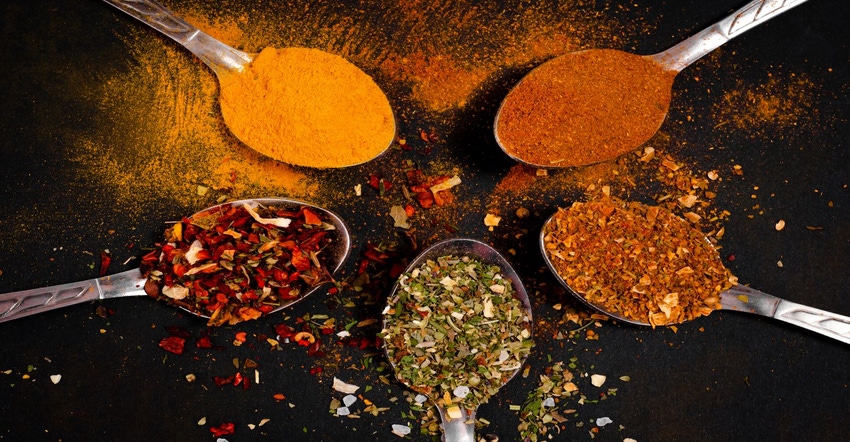Can consumers trust the herbs and spices they purchase are the real deal? According to a recent EU study, maybe not.

Herbs and spices are the backbone of any great food. Not only do they provide dishes their distinctive flavors, they may even confer their own benefits when consumed in the right combination and quantities.
However, whether it’s the perfect flavor to compliment a dish or the right benefits to keep one’s diet healthy, it’s important that consumers can trust they are getting what they pay for. A recent study in the EU highlights that may not always—or even often—be the case (EUR30877EN, Publications Office of the European Union, Luxembourg, 2021).
The study, which was carried out in 21 EU states as well as Switzerland and Norway, revealed nearly 1 in 5 herbs and spices was adulterated or modified in some undisclosed way. Oregano was found to the most commonly adulterated herb, with nearly half of collected samples (48%) containing other ingredients, most commonly olive leaves. Other herbs and spices found most likely to be adulterated included pepper (17% of samples), cumin (14%), curcuma (turmeric—11%), saffron (11%) and paprika (6%). The ways these herbs and spices were modified or adulterated varied. Some contained other materials added to the product but not disclosed; such was the case with oregano. More troublingly, some herbs and spices were found to contain additives presently unapproved for use in foods.
Overall, the study investigated 1,885 samples of herbs and spices, and found more than half contained “some amount of undeclared plant material.” About 1 in 50 samples contained unauthorized food dyes. Several samples were also found to have higher-than-allowed levels of copper, including two cumin samples, four pepper and a whopping 45 oregano. One sample also contained dangerously high levels of the carcinogenic chemical lead chromate.
While the rate of contamination among the herbs and spices tested was high, the researchers made clear they did not have enough data to accurately assign blame for where along the supply chain these issues were most likely to arise.
“No specific trend regarding the rate of potential fraudulent manipulations along the supply chain (country of origin/importers/wholesalers/processors/packagers) could be observed,” the authors wrote. “However, the number of samples obtained at certain stages (domestic production, local markets, border control, and internet) was too low to enable statistically meaningful comparisons.”
As interest in global flavors continues to grow, so too is the demand for the herbs and spices that provide those flavors. “The global demand for herbs and spices—and the market for value-added spices and herbs, such as crushed, milled or mixed –is on the rise,” the authors wrote, “with an increasing popularity of the food service sector for their use in ready-made meals, interest in new tastes and ethnic cuisine, health-related claims, etc.”
However, the authors were quick to note that with rising demand (and, currently, skyrocketing import and export costs), the potential for adulteration grows.
“Culinary herbs and spices are a globally traded commodity with a complex supply chain, including many steps before reaching the end users, i.e., the food and hospitality industry and consumers,” the study concludes. “Owned to the complexity of the chain, manifold opportunities exist to adulterate culinary herbs and spices to improve economic gain.”
About the Author(s)
You May Also Like






